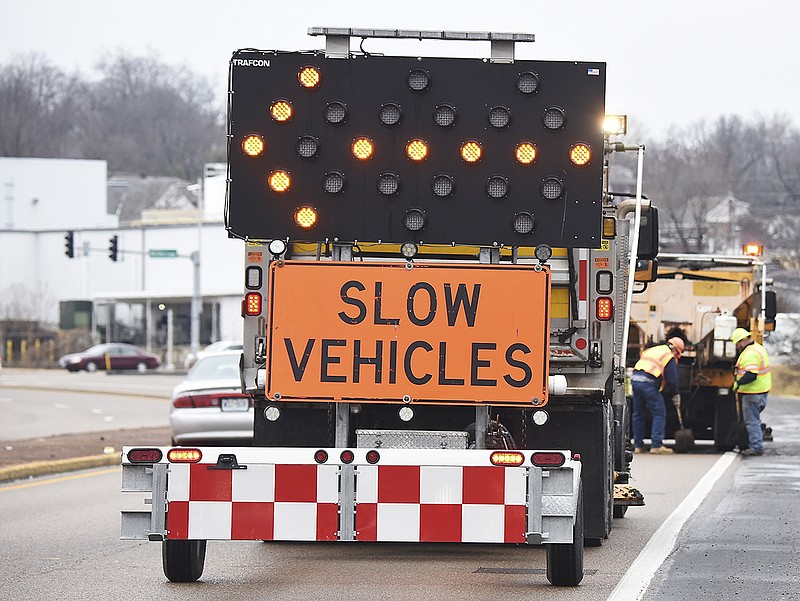Heat waves heighten. Tourists traverse. Holidays cause congregation. The Fourth of July weekend is here, and there is a downfall to these connected occurrences -- traffic.
According to Nick Chabarria, AAA Missouri public affairs specialist, "We certainly see an increase in roadway travel during the summer months, particularly with folks taking more road trips and kids out of school. So, we typically see an increase in traffic volume during the summer."
Such large volumes of vehicles on the road can lead to a much larger issue -- accidents and deaths in highway work zones.
MoDOT is focusing on reducing these fatalities, specifically in work zones, and new research being conducted by MU may help develop new strategies to do that.
Jennifer Harper, director of research at the Missouri Department of Transportation (MoDOT), said three of their workers have died in the past year due to crashes in work zones.
"I find it frustrating because I know some of these people that work on the roads, and they deserve to go home to their families," Harper said.
"People driving fast and inattention makes it dangerous for them," she added. "And so personally, I find it frustrating that people don't understand ... consequences to driving fast in a work zone."
"We need to encourage motorists to always pay attention while they're driving and obey the traffic laws," said Lt. Eric Brown, assistant director of the Missouri State Highway Patrol's public information and education division.
Motorists "need to be explicitly attentive when they're approaching work zones and then while traveling through them as well."
According to MoDOT's website the top five incidents that cause work zone crashes are inattentiveness, improper lane usage, following too close, speeding and failure to yield.
The safety of workers is put at risk when these mishaps occur. The barriers, which are designed to absorb energy from the impact of crashes and to protect workers, often get damaged as well.
Along major highways, trailer or truck mounted attenuators (TMA) alert traffic approaching work zones through message boards and lights. These devices provide both visual warnings and "crash cushions" which can slow or stop a car hurtling toward workers.
According to MoDOT's website, 37 injuries and two fatalities have occurred between 2018 and 2021 as a result of cars crashing into TMAs.
"We are seeing an increase in fatalities on our roadways and injuries. Even when we had COVID and the driving was down, our numbers were still going up," Harper said.
In 2020, when COVID-19 was at its peak, 987 traffic fatalities occurred, in comparison to 881 in 2019.
For 2021, the number increased again to 1,017 traffic fatalities. For that year, the National Highway Traffic Safety Administration reported a 10.5 percent increase nationally in motor vehicle fatalities, an estimated 42,915 compared to 38,824 in 2020.
In March 2021, MU began conducting a research project with funding from MoDOT, called Effectiveness of Speed Management Methods in Work Zones.
The project seeks to reduce the risk of work zone crashes by examining which speed control strategies are most effective, according to MoDOT's initial request for proposal for the research.
Henry Brown, an engineer researcher at MU and lead investigator for the project, said the goal of the research is to find strategies to reduce vehicle speed and improve worksite safety.
The researchers have studied various aspects of traffic control, including a study in St. Louis which collected speed data on Interstate 270, a driving simulator study with about 50 participants and a recent online survey.
Brown said the survey measures key speed control methods MoDOT sees as most effective. These methods include speed trailers (devices that measure and signal posted and actual speeds to drivers), law enforcement, and parked work vehicles with red and blue lights. All of these strategies test whether they slow down drivers.
Although speed does play a role in causing crashes in work zones, lack of attentiveness and being distracted is even larger. Based on MoDOT's website, distracted driving contributed to 336 work zone crashes in 2021.
The work of the Missouri News Network is written by Missouri School of Journalism students and editors for publication by Missouri Press Association member newspapers.

